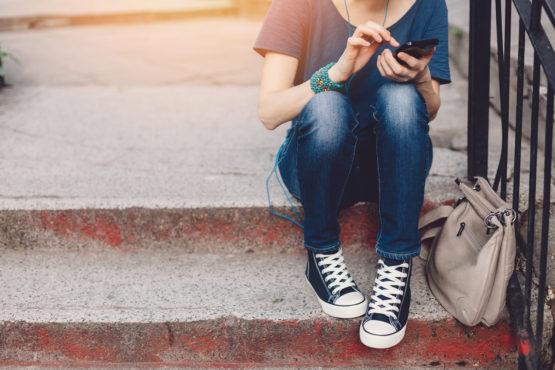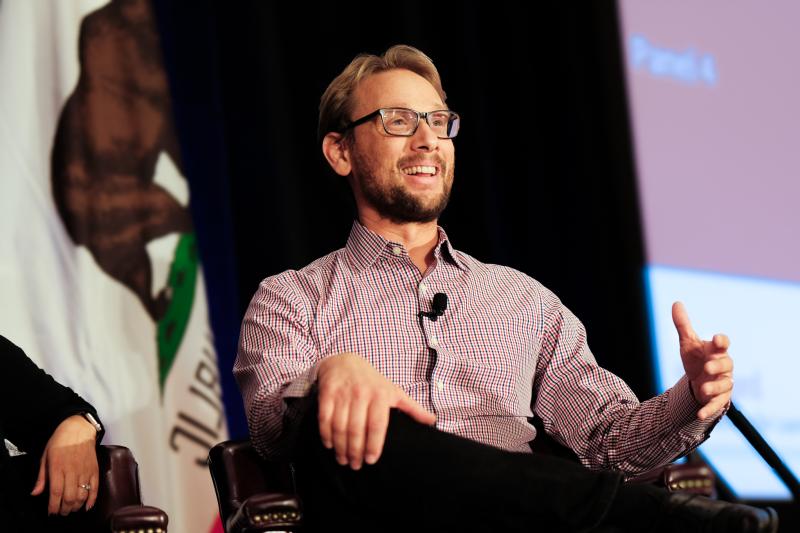
Can schools punish a student for a social media post? Stanford scholars discuss an imminent Supreme Court ruling
When Brandi Levy, a junior varsity cheerleader at a Pennsylvania high school, learned that she didn’t make the varsity cheerleading team, she did what any teenager might – she blew off some steam on social media. On a Saturday, from a neighborhood convenience store, she posted a short, profanity-laced rant on Snapchat expressing her discontent with school and cheerleading, with an image of herself and a friend raising their middle fingers to the camera.
A screenshot of the post made its way to the cheerleading coach, who suspended Levy from the junior varsity team. The school upheld the punishment, and Levy – represented by the American Civil Liberties Union (ACLU) – sued the district, claiming a violation of her First Amendment rights. After two courts ruled in the student’s favor, the school district brought the incident to the U.S. Supreme Court, which will issue a ruling before adjourning for the summer.
At issue is a precedent set in 1969 in Tinker v. Des Moines Independent Community School District, when the court ruled that the First Amendment protects student speech on campus if it doesn’t “substantially” interfere with school activities. Now, in Mahanoy Area School District v. B.L., the justices are being asked to decide whether Tinker applies to off-campus speech.
Bill Koski, a professor of law and education and director of the Youth & Education Law Project (YELP) at Stanford, has been tracking the case along with a team of YELP law students who are working on a similar case about internet-based speech and schools. Here, he and the students – Taylor Chambers, Bruce Easop and Leah Plachinski – discuss the case and its implications.
Why is this case so important?
Koski: From a legal standpoint, it’s important because we need some clarity on how much authority schools have over student speech. If I were a school administrator, I’d want to know what authority – or, more importantly, what responsibility – I might have to police off-campus speech. I’d want to protect the learning environment, but at the same time, I wouldn’t necessarily want to have to monitor everything being shared on social media. The court has an opportunity to provide some guidance here.
Plachinski: The Supreme Court has yet to look at a case like this, where you have a student who is clearly off campus and venting her frustration on social media. If she had just said it to her parents or friends in her own home, the school wouldn’t be able to punish her. Social media has become a prevalent way for kids to communicate, but it also amplifies speech in a way that normal conversations don’t. The court has never addressed a school’s ability to punish off-campus, internet-based speech.
Does it even make sense to distinguish between on-campus and off anymore, given the prevalence of social media and now remote learning?
Koski: There’s a famous line from the ruling in Tinker where the court said that students don’t shed their free speech rights “at the schoolhouse gate.” This imagery has a geographic feel to it, where civil liberties differ depending on whether a student is in or out of school. But Tinker was long before the internet, where that sort of geographic boundary doesn’t make as much sense.
What kind of boundary could the court establish instead?
Koski: This is a difficult case because it begs for a bright-line rule, but it’s hard to come up with one. The ACLU is proposing a test that only gives schools the authority to regulate speech in the “school environment,” which includes things like school-sponsored events or websites. But the district is proposing a much broader test that would allow schools to punish a student’s off-campus speech so long as the student targeted the school and the speech is about a school topic.
Plachinski: Tinker created the “substantial disruption” test, which says that if school officials reasonably believe that a student’s speech will substantially disrupt educational activities, or if other students’ rights were infringed upon, the school can discipline the student. In B.L., the main question is whether Tinker applies to off-campus speech, but we also don’t have a concrete definition of what constitutes a “substantial disruption.” Courts have struggled with the term for the past 50 years, so it will be interesting to see if this ruling provides a more precise definition.
What argument is the school district making for having authority over off-campus speech?
Easop: The district has suggested that it can be important for schools to be able to monitor and respond to violent or harassing speech – if someone is threatening their students, they need to have some recourse. But the student’s lawyers argued that schools would still be able to respond to that type of speech because of the “true threats doctrine,” which preserves the ability to punish threatening speech. There would still be an outlet for that kind of concerning situation.
Whatever the court decides, what would you want educators to take away from this case?
Koski: This has been cast as a First Amendment case, as it should. But it also raises some other issues. I believe educators want students’ rights to be honored and, at the same time, want to be clear that schools are a safe place where learning occurs in many different ways.
Chambers: Schools have a responsibility to help young people navigate how they engage with each other, in person and on social media. I hope schools see this as an opportunity to empower students to use social media more thoughtfully, and when kids inevitably fall short, that they use restorative practices to repair the community and help students learn from the experience, rather than using exclusionary school discipline practices like suspension or expulsion.
Koski: Many of us have been fighting for decades now against exclusionary school discipline to punish kids, to think about ways to repair and restore. I fear that a potential consequence of allowing too much amenability to punish speech outside of school is that, if history is any guide, this will disproportionately land on African-American and Latinx kids, or on kids with disabilities who don’t have the same ability to manage and moderate their behavior. This is a good moment to think about best practices for addressing these issues that don’t involve punishment and that don’t land in a federal court.
Faculty mentioned in this article: William Koski



